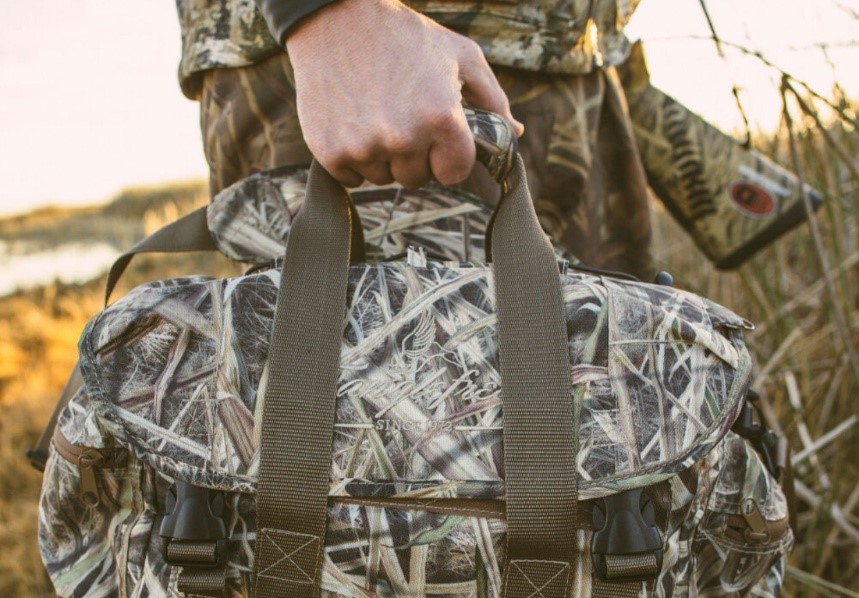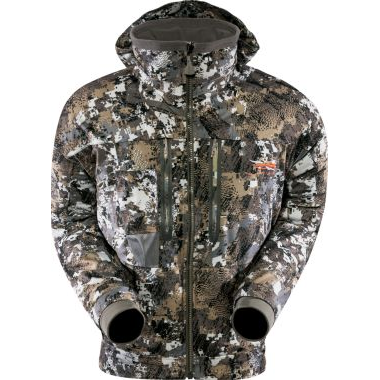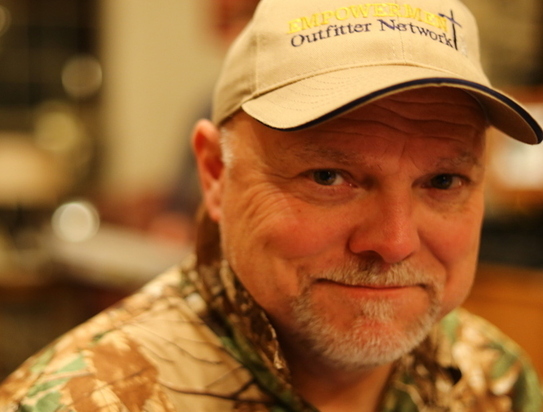Six Things New Deer Hunters Do and Don’t Need
The constant barrage of new hunting products and gadgets always amazes me. The same goes for the incessant flood of improved ones. It’s no more prevalent than in the archery business where current marketing efforts would have you believe that you need a new bow every year or two. Sure, the taglines and marketing pitches, don’t directly say it, but they, along with vivid imagery, sure can make a sportsman covetous.
Amongst the aggressive and effective product promotion in the deer hunting industry, it’s hard to distinguish hunting needs from wants. And this is for existing hunters.
Imagine how difficult it is for onset hunters wanting to enter the fray. In the spirit of minimizing barriers to the sport, a little common sense is in order. Here are six items that new hunters do not need – at least not before they get their legs in the hunting realm. If you fall into this group, these are things you need not research or yearn for, much less buy. Not yet.
High-End Firearms
What could be more exciting than purchasing your first hunting rifle? Talk about a rite of passage. If you don’t have the luxury of having one passed down from Meemaw or Papa, there are plenty of quality budget alternatives in the rifle market.
What about precision? Long-range shooting? Chances are, the deer in your crosshairs will be moderate in distance. Further, new hunters will likely not need a high-end rifle (if ever) considering how and where they hunt. Don’t overspend here. Regardless of hunting areas or conditions, virtually all appropriate hunting calibers are offered with both budget and expensive guns.
Hint: if you’re going to stretch your spending limit on your rifle, do so for your scope. Pairing quality optics with your hunting rifle actually can make a difference.
Expensive Ammunition
Likewise, though there are some premium brands and varieties of ammo available, you don’t have to spend $40-plus a box to effectively hunt deer. For example, for common calibers, Remington Express Core Lokt ammunition is very popular (and effective) at a price point ranging from $15-$30 per box. The fact of the matter is that, with proper shot placement, deer can be easily taken down. I’ve yet to see deer hunt end badly because of ammo price.
Hunting Lures and Scent Control
Don’t get me wrong, scent control is very important in the deer woods. However, when starting out, there are so many basics that can be employed before buying a bunch of doe pee and estrous scents. In my experience, they can be overemphasized or even misused, doing more harm than good.
What about scent-containment clothing? I don’t doubt they can work but I’m not a big advocate. Even if I was, they’re far from necessary for the hunting newbie. From a scent perspective, the real issue is what you leave on the ground and touch. Concentrate on your actions and employ the basics, like playing the wind. If you insist on getting into the scent game, concentrate on scent eliminators at this juncture. Otherwise, save the money.
Fancy Camo Clothing
I have to come clean: I love and use many types of camo, some even expensive. And I’ve accumulated an overabundance of it. However, a lot of it has to do with advancements in fabric technology and garment design. The camo itself is great, too, and an important part of not only blending in but celebrating the hunting and outdoors lifestyle. Still, it can be expensive – and unnecessarily so.
The fact of the matter is that dark colors (olive green, gray, brown, and black) do the trick. Along with avoiding light colors, concentrate on minimizing movement while in the stand.
If you’re going to outfit yourself in camo, start out with the basics, like jackets, pants, and headwear – but prepare yourself. The endless racks of camo clothing at big box hunting stores can make you dizzy. Better yet, seek hand-me-downs from friends or family. Hunting clothing at this stage should have more to do with comfort than style. Comfortable gloves, socks, and boots appropriate for the typical area weather conditions go a long way toward positive hunting experiences.
Note: some states (and most public hunting areas) require blaze-orange hunting clothing. Educate yourself on local requirements.
Calls and Decoys
Fake whitetails, snorts, grunts, rattles, and bleats. You can barely escape them on deer hunting shows. Here, real or faux antlers are wildly slammed together and, soon after, a buck comes in on a string. It looks exciting and attractive. If used correctly, decoys and calls can (and do) work. However, you’re just as likely to spook deer as attract them. These are unnecessary strategies for the hunter on the front end of his or her learning curve. At this stage, why take a chance of alarming deer, much less letting them know you’re there? For now, sit back and learn, keeping your hunting sessions as normal as possible.
Gadgetry and Unnecessary Camo
Hearing enhancement earmuffs, laser rangefinders, trail cameras – often camo-laden. The list of hunting accessories on the market is long. Like many others, these are great tools. But, patience grasshopper. Do your bank account a solid and put such hunting “niceties” off for the time being. Of course, the camo finish itself often adds no value whatsoever. Sunglasses and seat covers, arrows, and phone cases; it’s never-ending. Save the cash. What about camo knives and flashlights? They’re great until you drop them on the ground and literally can’t find them.
What about the things you do need? When it comes down to it, getting started in deer hunting doesn’t require much in terms of gear, and adding to the list only complicates things and dings your budget. There are a few basics needed for embarking on this great pastime.
Hunting License
Duh, you say? You might be surprised how many people cut this corner. Take time to get the appropriate license needed for deer hunting in your state. Ask questions as necessary.
A Place to Hunt
If you’ve made the deer hunting leap, hopefully, you have a friend or family member that has a section of property for you to hunt. If not, maybe they can show you the ropes with hunting local public land. At a minimum, read up on your state’s hunting regulations and opportunities. Your state’s wildlife or natural resources department website is a great place to start.
Dress for Comfort
As mentioned above, it’s essential that you have comfortable hunting clothing appropriate for your area weather conditions; the basics such as adequate outerwear, gloves, and pants. You don’t have to spend a lot and you might even consider borrowing from someone. Comfort in the hunting blind makes the trip much more enjoyable and adequate hunting garments don’t have to break the bank.
A Good Knife
A good friend, outfitter, and guide once told me, “The best kind of knife is a sharp one.”
I tend to agree. While new hunters don’t need an elaborate set of knives (or an expensive one), a good skinning knife is an essential part of your pack. Even if you don’t know how to field dress a deer yet, you’ll want to learn. Plus, knives have many other uses in the field. The fact is, you can get an adequate hunting knife for less than $30. Don’t overspend here. As mentioned, it’s more important to keep it sharp. A knife like a Havalon Piranta has replaceable blades so it can always stay sharp.
Optics
A good deer hunt starts with spotting the animal in the first place, and you should never underestimate the value of quality optics like binoculars and scopes. High-end optics aren’t crucial for deer hunting success. A dependable, if not a fancy set of binoculars adds to the experience. Seeing the game is half the fun. Optics are crucial to the hunt. You usually don’t need tons of power for deer hunting. For binoculars, anything in the 8X – 12X magnification range is sufficient, though 12X can be a hindrance for close-up viewing.
And for rife scopes? For typical deer hunting scenarios, anything over 10X is arguably unwarranted. A reasonably priced scope of 3X x 9X power is the sweet spot for the average deer hunt.
A Mentor
Last, but certainly not least, every new hunter needs a teacher. My dad and both grandfathers were hunting mentors for me at an early age. I’m one of the lucky ones. Fewer people are buying hunting licenses and hitting the woods to deer hunt. I’ve always been empathetic toward recruiting new hunters. For youth and the onset hunter in general, it’s important to have a mentor. Introduce children and youth. If you’re an adult, seek out someone to guide you through the process. At a minimum, your mentor will help to set expectations, make you comfortable, and set you up for hunting success in general.
If you’re breaking into the deer hunting game, the idea is to focus on the basics. Don’t overspend out of the chute; rather rely on a mentor, and don’t go crazy with new gear. There is a lot of value in keeping hunting sessions a controlled experiment and not adding too many variables. After logging more field time and polishing your skills, there will always be time for new and upgraded equipment.
Based in Texas, Jerald Kopp is President of 1st Light Hunting Journal. His articles cover a variety of topics about hunting and the outdoor lifestyle. Jerald is an avid outdoorsman with deer hunting and whitetails being by far his greatest passion. He was introduced to hunting and fishing at an early age and has been enjoying it for 40+ years. In 2005, he established the Empowerment Outfitter Network (EON) – a faith-based non-profit organization that provides hunting opportunities for disabled and terminally-ill children and youth. When not hunting, he spends his time traveling and enjoying life with Amy, his wife of over 30 years. Jerald and Amy have two adult daughters and a son-in-law.






